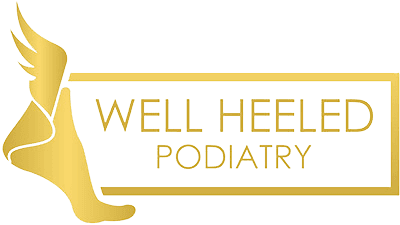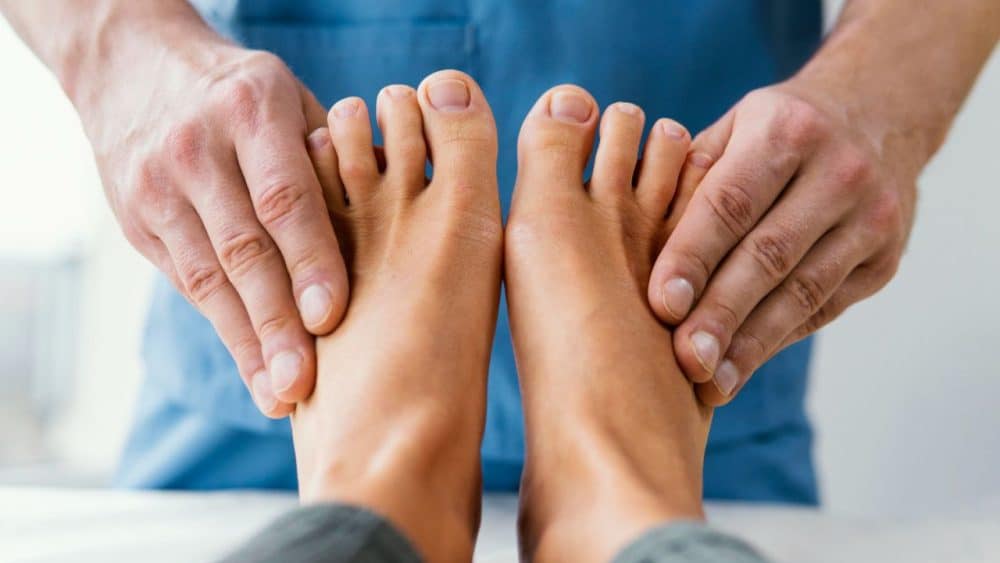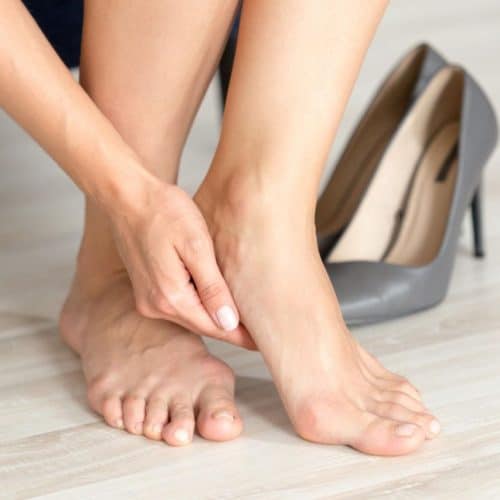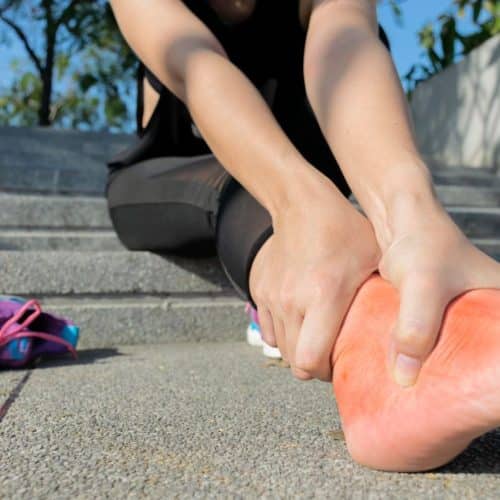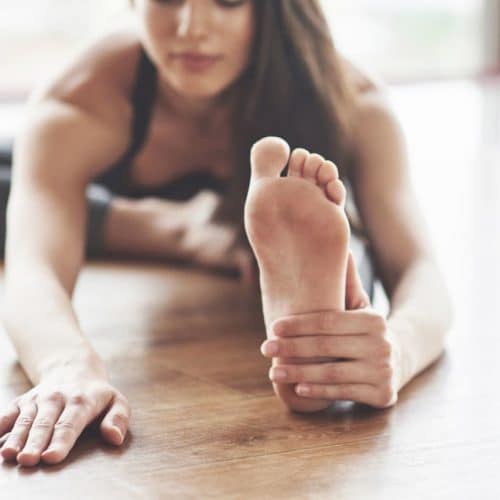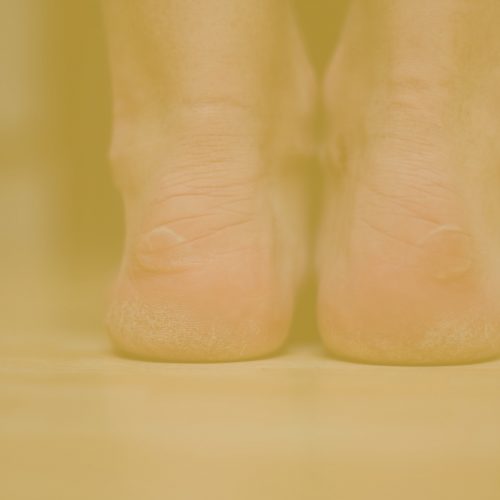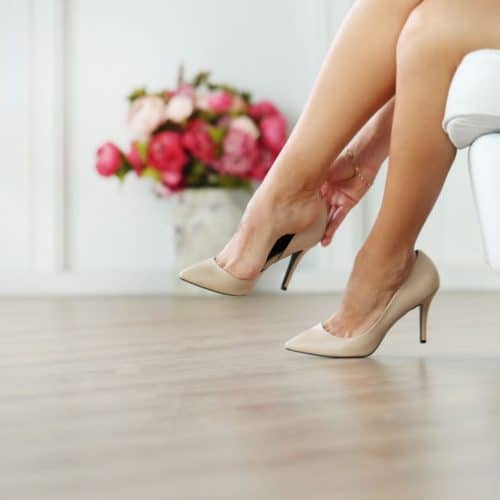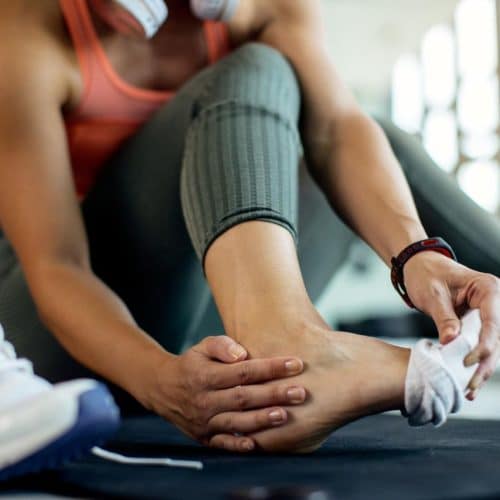Pain in the heel is a typical complaint among a large number of people, and it may frequently be both uncomfortable and disruptive to everyday activities. In spite of the fact that it may be appealing to speak with a general physician, it is in your best interest to seek the assistance of a podiatrist. I’ll explain why.
What Is Heel Pain?
A discomfort or pain beneath the heel bone is known as heel pain. Heel pain is also sometimes referred to as plantar heel pain or plantar fasciitis. This pain can range from being quite moderate to being quite severe, and it can either be quite acute or rather dull. The best therapy may be found by first gaining an understanding of the condition’s many forms, as well as its causes and symptoms.
1. Causes of Heel Pain
- Plantar Fasciitis: One of the most common causes of heel pain. It occurs when the plantar fascia, a thick band of tissue that runs across the bottom of your foot and connects your heel bone to your toes, becomes inflamed.
- Heel Spurs: These are calcium deposits that form a bony protrusion on the underside of the heel bone. They often develop in patients who have plantar fasciitis.
- Achilles Tendinitis: This is caused by the inflammation of the Achilles tendon, which connects your calf muscles to your heel bone.
- Bursitis: Inflammation of the bursa, a small sac filled with fluid that cushions the foot joints.
- Stress Fracture: This is common in athletes, especially those who participate in high-impact sports. It’s a small crack in the bone caused by repetitive stress.
2. Symptoms of Heel Pain
- Pain beneath the heel, especially after waking up or after long rest periods.
- Swelling or discolouration on the heel.
- Pain that worsens upon standing or walking, especially on hard surfaces.
- Pain that increases over time if left untreated.
3. Types of Heel Pain
- Acute Heel Pain is sudden pain resulting from an injury or trauma, such as a heavy object falling on the foot or stepping on a sharp object.
- Chronic Heel Pain: This persistent pain develops over time, often due to factors like poor footwear, abnormal gait, or underlying medical conditions.
Understanding the specific cause and type of heel pain is crucial for effective treatment. If you experience any of these symptoms, it’s essential to consult a specialist, like a podiatrist, to get a proper diagnosis and treatment plan.
Why See a Podiatrist for Heel Pain?
Heel pain can be debilitating and affects your daily activities and overall quality of life. While general physicians can offer insights, a podiatrist can provide comprehensive care tailored to your specific needs with their specialised training and expertise. Here’s why consulting a podiatrist for heel pain is a wise decision:
- Specialised Care: Podiatrists undergo rigorous training on foot, ankle, and lower extremity disorders. Their in-depth knowledge ensures they can provide accurate diagnoses and create effective, individualised treatment plans.
- Comprehensive Assessment: A podiatrist doesn’t just look at the heel in isolation. They will thoroughly examine factors like your gait, the type of footwear you use, your daily activities, and even your posture. This holistic approach ensures that the root cause of the pain is identified and addressed.
- Advanced Treatment Options: Podiatrists have the latest tools and techniques to treat heel pain. They can offer solutions that might not be available in a general medical setting, from state-of-the-art imaging equipment to innovative non-surgical treatments.
- Non-Invasive Treatments: Before considering surgical interventions, podiatrists often recommend non-surgical treatments. These include custom orthotics, physical therapy, shockwave therapy, and lifestyle modifications. Such treatments can effectively manage heel pain and often have shorter recovery times.
- Surgical Expertise: A podiatrist is trained to perform various foot and ankle surgeries if surgery is required. Their specialised surgical training ensures you receive the best care, from pre-surgical consultation to post-operative recovery.
- Education and Prevention: Beyond treating the immediate issue, podiatrists educate patients on preventing future heel pain. This can include guidance on selecting the right footwear, exercises to strengthen foot muscles, and tips on proper foot care.
- Personalised Follow-Up: Heel pain can sometimes be a recurring issue. Regular check-ups with a podiatrist ensure that any potential problems are caught early and adjustments to treatment plans are made as necessary.
In essence, while general physicians play a crucial role in overall health care, the specialised expertise of a podiatrist makes them the best choice for addressing heel pain. Their comprehensive approach ensures relief from pain and long-term foot health.
No Referral Needed
One of the significant advantages of seeking care from a podiatrist is the ease of access. When it comes to podiatrists, unlike other medical specialists, who require a recommendation from a primary care physician to schedule an appointment, you may arrange an appointment with a podiatrist without going through any other stages in the process beforehand.
Because this procedure has been simplified, it ensures that those suffering from heel pain or any other foot-related concerns may receive the necessary care in a timely manner. It reduces the possibility of waiting times developing due to the patient initially consulting a primary care physician and then being sent to a specialist.
Patients who have immediate access to a podiatrist can receive a diagnosis and treatment more quickly and take preventative measures to improve their foot health without having to wait for any bureaucratic processes to be completed.
The absence of a necessity for a referral, in effect, makes the trip through the healthcare system easier for patients, making it more likely that they will obtain prompt and specialised treatment for their foot and ankle problems.
Expert Foot Care Matters
Our feet are remarkable structures, bearing the weight of our entire body and facilitating movement, from simple walks to complex athletic feats. Given their crucial role, it’s paramount that they receive the best care possible.
Expert foot care, provided by professionals like podiatrists, is about addressing immediate concerns and ensuring our feet’ long-term health and functionality. Clinics like Well Heeled Podiatry emphasise the importance of comfort and prioritise the well-being of their patients, ensuring that each individual receives tailored care that addresses their unique needs.
With the intricate anatomy of the foot, comprising numerous bones, tendons, ligaments, and muscles, it’s essential to have a specialist’s perspective when issues arise. A podiatrist’s expertise ensures that problems are not only treated effectively but also that preventive measures are put in place to avoid future complications. In a world where we often take our feet for granted, recognising the importance of expert foot care is a step towards better overall health and well-being.
Prevention is Better Than Cure
The age-old adage, “Prevention is better than cure,” holds profound truth, especially regarding our health. In the realm of foot care, this principle is particularly pertinent. Our feet, constantly subjected to stress and strain, are vulnerable to a myriad of issues, from minor discomforts to debilitating conditions. We often sidestep these problems by prioritising preventive measures or mitigating their severity.
Proactive steps, such as wearing supportive footwear, maintaining proper foot hygiene, and engaging in regular foot exercises, can go a long way in keeping foot-related ailments at bay. Moreover, understanding the early signs of potential problems and seeking timely advice can significantly affect outcomes. For instance, addressing the initial discomforts of conditions like plantar fasciitis or heel spurs can prevent them from escalating into chronic issues that demand intensive interventions.
Regular check-ups with a podiatrist play a pivotal role in this preventive approach. These visits allow for early detection of potential problems and allow individuals to receive guidance tailored to their needs and lifestyles. These insights can be invaluable in maintaining foot health, whether it’s advice on the right type of shoes for a particular activity or exercises to strengthen foot muscles.
While treatments and cures are essential when problems arise, a preventive approach rooted in awareness and proactive care is the cornerstone of lasting foot health. By embracing this philosophy, we safeguard our feet and enhance our overall quality of life, ensuring that we can move through the world with ease and confidence.
Conclusion
In conclusion, while general physicians may be able to provide some insight into heel pain, podiatrists are the best choice for complete foot care due to their specialised knowledge and years of experience in the field. If you encounter heel pain that does not go away, you should think about scheduling an appointment with a podiatrist to see whether or not you are on the correct track to recovery.

